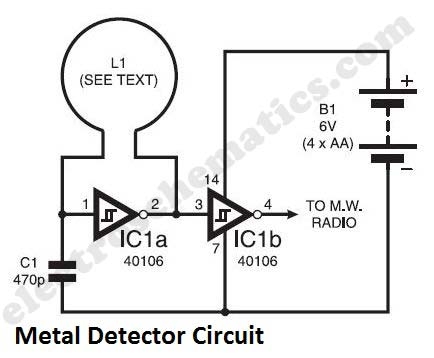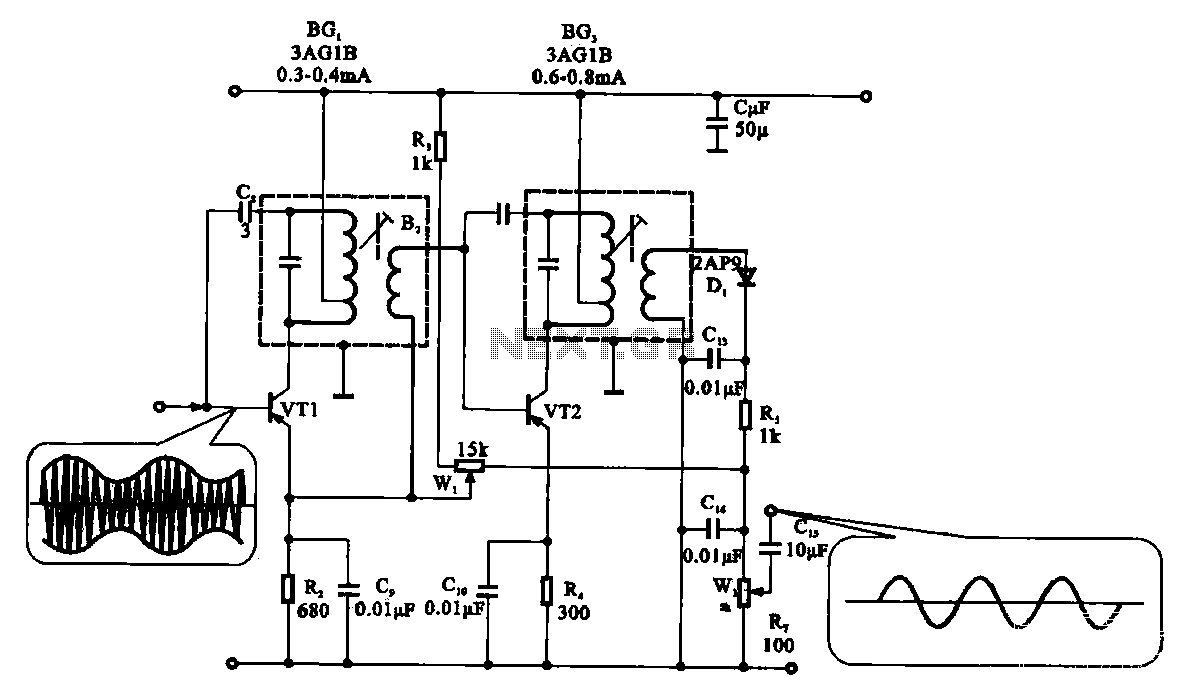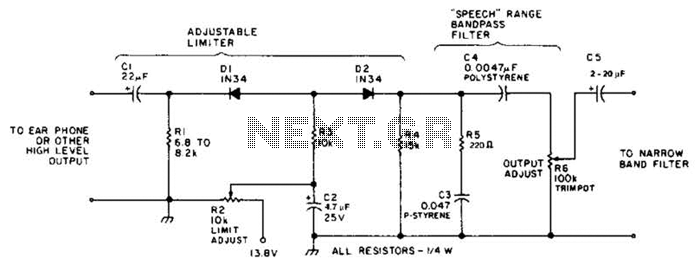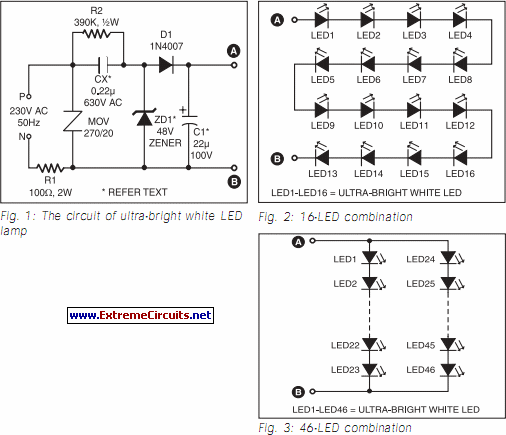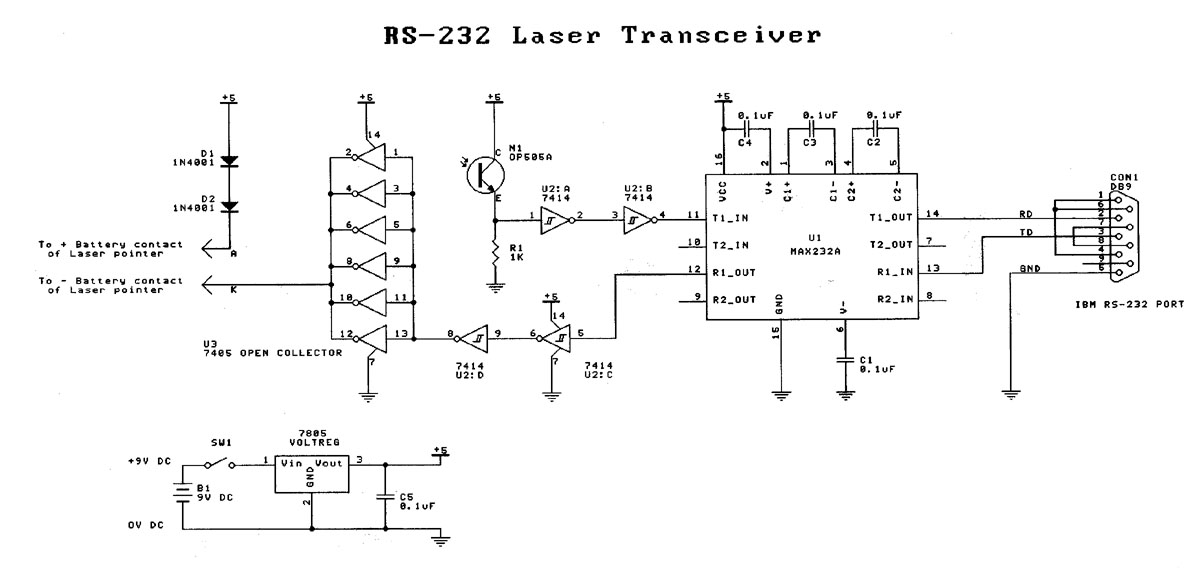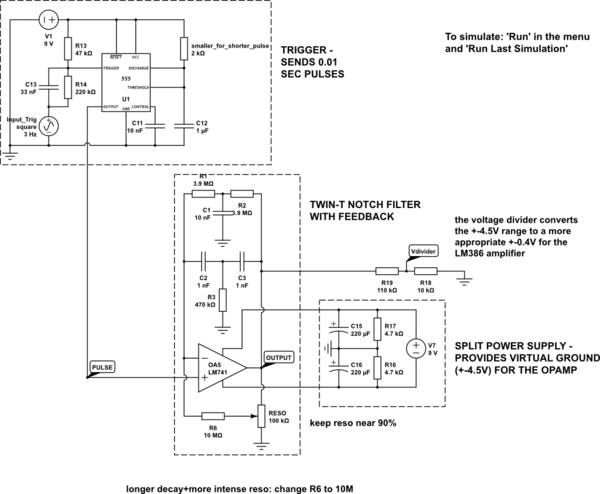
Smoke Alarm Circuit
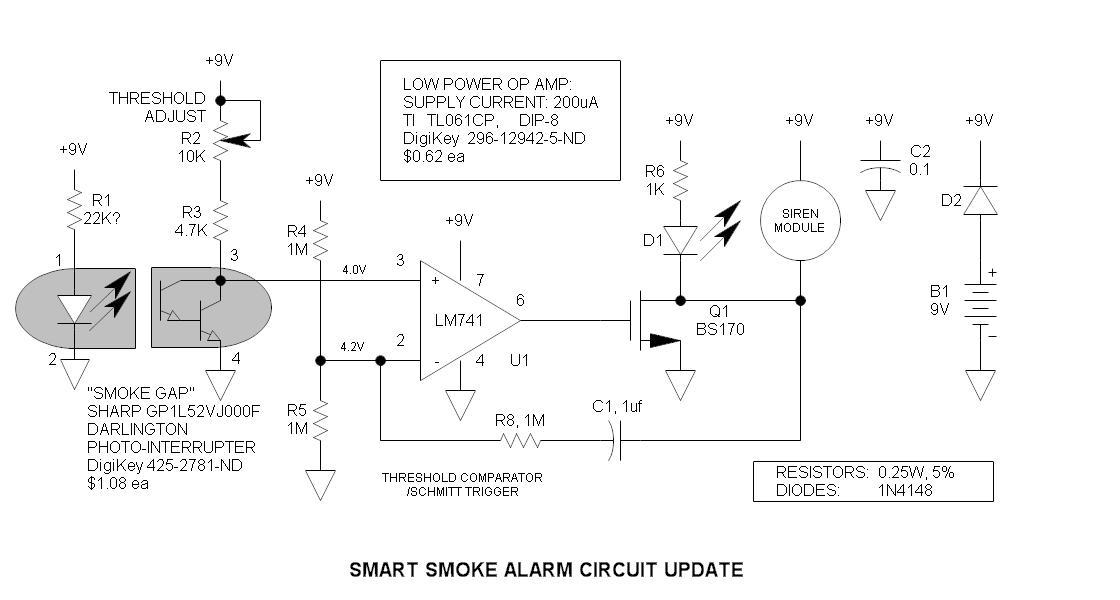
The original smoke alarm circuit has several issues that have left hobbyists and students dissatisfied. Instead of trying to resolve its numerous problems, an updated version has been created using the well-known LM741 op-amp. This new design is simpler, more conventional, easier to understand, and offers significantly better battery life. The photo-interrupter is essentially an optical coupler with elements separated by a slot. Any object entering this slot reduces the current transfer ratio (output current/input current). The H21B1 Darlington device was used due to the unavailability of the H21A1. This choice proved advantageous as it requires much less LED current. As the H21A1/H21B1 series is no longer available from DigiKey, a currently available and more affordable device, the Sharp GP series, was selected. Sharp appears to lead in this product category. Although the Darlington device is recommended, alternatives exist if the non-Darlington version is available. The smoke alarm schematic includes alternative devices and circuits, which, while untested, should be viable. Initial doubts about the technique's effectiveness were alleviated by testing a photo-interrupter with smoke, demonstrating its functionality. An oscillograph showed the changes in the photo-transistor collector voltage when smoke obscured the gap. Additionally, a trace indicated the effect of inserting a transparent poly film into the gap, which produced a lower signature. Ambient light also impacts output voltage, although in this case, it was only about ±0.1V. Shielding from outside light sources may be necessary if it poses a problem. The LM741 is a suitable choice, but a low-power substitute (TI TL061) was found, reducing battery current to only 1.1mA. The LM741 operates as a comparator/Schmitt trigger, with the inverting input biased at 4.2V (half of Vcc). The collector of the photo-transistor is adjusted via R2 to 4.0V. A reduction in the current transfer ratio causes the collector voltage to exceed 4.2V, at which point the op-amp output becomes positive, activating the MOSFET. The drain of the MOSFET drops to zero volts, and C1 provides a positive feedback signal to the inverting input through R8. The RC time constant of R8 and C1 ensures that the LED and siren remain activated for at least one second after smoke clears. C1 must be either film or ceramic due to the reversal of voltage polarity. R1 should be selected to yield approximately 4V at the collector of the photo-transistor with R2 centered. Its resistance depends on the photo-interrupter transfer ratio, which may vary up to 40:1. When selected, R2 will be adjustable for operational purposes. In the smoke alarm circuit, one device required 10K while another needed 22K.
The updated smoke alarm circuit utilizes the LM741 op-amp as a comparator and Schmitt trigger, providing improved performance and reliability. The circuit design features a photo-interrupter that effectively detects smoke by measuring the current transfer ratio, influenced by the presence of smoke particles. The chosen H21B1 Darlington device enhances the sensitivity of the circuit, allowing for lower LED current consumption, which is critical for battery-operated devices. The integration of the Sharp GP series optical coupler ensures that the circuit remains functional with readily available components.
The operational principles of the circuit hinge on the interaction between the photo-interrupter and the LM741 op-amp. The inverting input is set to a reference voltage of 4.2V, while the collector voltage of the photo-transistor is calibrated to 4.0V. This configuration allows the circuit to detect significant changes in the collector voltage when smoke is present, triggering the op-amp to output a high signal that activates the MOSFET. The MOSFET serves as a switch, connecting the load (LED and siren) to ground, thereby signaling an alarm condition.
The inclusion of a timing capacitor (C1) in the feedback loop ensures that the alarm remains active for a brief period after the smoke has cleared, preventing false alarms from momentary fluctuations in smoke density. The choice of capacitor material is essential, as it must withstand voltage reversals without degradation. Resistor R1 plays a crucial role in adjusting the collector voltage of the photo-transistor, while R2 allows for fine-tuning based on the specific characteristics of the photo-interrupter used.
Overall, this circuit design not only addresses the shortcomings of previous smoke alarm circuits but also provides a robust and efficient solution for smoke detection, suitable for both hobbyists and educational purposes. The careful selection of components, combined with a clear understanding of operational parameters, ensures a reliable and effective smoke alarm system.The original smoke alarm circuit has some problems and has left some hobbyists and students disappointed. Rather than to attempt to solve its many problems, I have created an update that uses the venerable LM741 op amp.
It is simpler, more conventional, easier to understand and has much better battery life. The photo-interrupter is simply an opti cal coupler with the elements separated with a slot. Anything that enters this slot reduces the current transfer ratio (output current /input current). I used the H21B1 Darlington device since I did not have the H21A1 on hand. I am glad I did, because I learned that it is a better device, requiring far less LED current. Since the H21A1 /H21B1 series is no longer available from DigiKey, I selected a currently available, more inexpensive device ”the Sharp GP series ”see schematic(s) for details. Sharp appears to be the leader in this product. Although, I recommend the Darlington device, do not despair if you have the non-Darlington version. See the smoke alarm schematic for alternative devices /circuits. These were not tested, but I see no reason why they are not viable. I had my doubts as to the effectiveness of the technique, so I tested a photo-interrupter with smoke.
The oscillograph demonstrates what happens to the photo-transistor collector voltage when the gap is obscured with smoke from my soldering iron as it melted rosin core solder. Cool! It does work. The oscillograph also has a trace showing what happens when a transparent poly film is inserted into the gap.
It has a lower signature. I figured if it could see this effectively, it is an easier test, so the remaining testing is with film rather than smoke. Ambient light also affects the output voltage. In my case, it was only about ±0. 1V, but the sensor may need to be shielded from outside light sources if it is a problem. The old LM741 is a good choice, but I also found a low power substitute (TI TL061) that reduces battery current ”see schematic for details.
As it is, battery load is only 1. 1mA ”not bad! The LM741 is applied as a comparator /Schmitt trigger. The voltage on the inverting input is biased at 4. 2V (half of Vcc). The collector of the photo-transistor is adjusted via R2 for 4. 0V. Any reduction of the current transfer ratio causes the collector voltage to increase beyond 4. 2V. At this point, the output voltage of the op amp goes positive and turns on the MOSFET. The drain of the MOSFET drops to zero volts and C1 couples a positive feedback signal to the inverting input via R8. The R*C of R8 & C1 causes the LED & siren to stay on for at least 1sec after the smoke has cleared. C1 has to be either film or ceramic because the voltage polarity reverses. R1 must be selected to provide approx 4V at the collector of the photo-transistor with R2 centered. Its resistance is a function of photo-interrupter transfer ratio and may vary as much as 40:1. When this is selected, R2 will be within range of making operational adjustments. The question marks on the schematics are for this purpose ”actual resistance must be determined. In my smoke alarm circuit, one device required 10K while the other required 22K. 🔗 External reference
The updated smoke alarm circuit utilizes the LM741 op-amp as a comparator and Schmitt trigger, providing improved performance and reliability. The circuit design features a photo-interrupter that effectively detects smoke by measuring the current transfer ratio, influenced by the presence of smoke particles. The chosen H21B1 Darlington device enhances the sensitivity of the circuit, allowing for lower LED current consumption, which is critical for battery-operated devices. The integration of the Sharp GP series optical coupler ensures that the circuit remains functional with readily available components.
The operational principles of the circuit hinge on the interaction between the photo-interrupter and the LM741 op-amp. The inverting input is set to a reference voltage of 4.2V, while the collector voltage of the photo-transistor is calibrated to 4.0V. This configuration allows the circuit to detect significant changes in the collector voltage when smoke is present, triggering the op-amp to output a high signal that activates the MOSFET. The MOSFET serves as a switch, connecting the load (LED and siren) to ground, thereby signaling an alarm condition.
The inclusion of a timing capacitor (C1) in the feedback loop ensures that the alarm remains active for a brief period after the smoke has cleared, preventing false alarms from momentary fluctuations in smoke density. The choice of capacitor material is essential, as it must withstand voltage reversals without degradation. Resistor R1 plays a crucial role in adjusting the collector voltage of the photo-transistor, while R2 allows for fine-tuning based on the specific characteristics of the photo-interrupter used.
Overall, this circuit design not only addresses the shortcomings of previous smoke alarm circuits but also provides a robust and efficient solution for smoke detection, suitable for both hobbyists and educational purposes. The careful selection of components, combined with a clear understanding of operational parameters, ensures a reliable and effective smoke alarm system.The original smoke alarm circuit has some problems and has left some hobbyists and students disappointed. Rather than to attempt to solve its many problems, I have created an update that uses the venerable LM741 op amp.
It is simpler, more conventional, easier to understand and has much better battery life. The photo-interrupter is simply an opti cal coupler with the elements separated with a slot. Anything that enters this slot reduces the current transfer ratio (output current /input current). I used the H21B1 Darlington device since I did not have the H21A1 on hand. I am glad I did, because I learned that it is a better device, requiring far less LED current. Since the H21A1 /H21B1 series is no longer available from DigiKey, I selected a currently available, more inexpensive device ”the Sharp GP series ”see schematic(s) for details. Sharp appears to be the leader in this product. Although, I recommend the Darlington device, do not despair if you have the non-Darlington version. See the smoke alarm schematic for alternative devices /circuits. These were not tested, but I see no reason why they are not viable. I had my doubts as to the effectiveness of the technique, so I tested a photo-interrupter with smoke.
The oscillograph demonstrates what happens to the photo-transistor collector voltage when the gap is obscured with smoke from my soldering iron as it melted rosin core solder. Cool! It does work. The oscillograph also has a trace showing what happens when a transparent poly film is inserted into the gap.
It has a lower signature. I figured if it could see this effectively, it is an easier test, so the remaining testing is with film rather than smoke. Ambient light also affects the output voltage. In my case, it was only about ±0. 1V, but the sensor may need to be shielded from outside light sources if it is a problem. The old LM741 is a good choice, but I also found a low power substitute (TI TL061) that reduces battery current ”see schematic for details.
As it is, battery load is only 1. 1mA ”not bad! The LM741 is applied as a comparator /Schmitt trigger. The voltage on the inverting input is biased at 4. 2V (half of Vcc). The collector of the photo-transistor is adjusted via R2 for 4. 0V. Any reduction of the current transfer ratio causes the collector voltage to increase beyond 4. 2V. At this point, the output voltage of the op amp goes positive and turns on the MOSFET. The drain of the MOSFET drops to zero volts and C1 couples a positive feedback signal to the inverting input via R8. The R*C of R8 & C1 causes the LED & siren to stay on for at least 1sec after the smoke has cleared. C1 has to be either film or ceramic because the voltage polarity reverses. R1 must be selected to provide approx 4V at the collector of the photo-transistor with R2 centered. Its resistance is a function of photo-interrupter transfer ratio and may vary as much as 40:1. When this is selected, R2 will be within range of making operational adjustments. The question marks on the schematics are for this purpose ”actual resistance must be determined. In my smoke alarm circuit, one device required 10K while the other required 22K. 🔗 External reference
